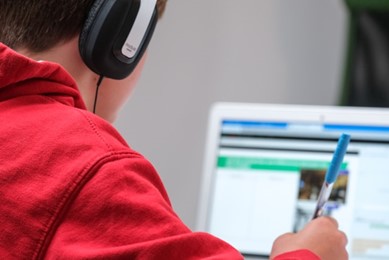Christopher Peyton Crawford is a professional in educational technology (EdTech), driving innovations that are revolutionizing remote learning. In the following article, Christopher Crawford discusses some of the most innovative tools used for remote learning, their benefits, and how they are reshaping the future of education.
The landscape of education has undergone a profound transformation with the advent of remote learning, accelerated further by recent global events. Educational Technology has played a pivotal role in facilitating this shift, offering innovative tools and platforms that enhance the learning experience beyond the traditional classroom setting.
Christopher Peyton Crawford Highlights Virtual Classroom Platforms
Virtual classroom platforms serve as the backbone of remote learning, providing teachers and students with a digital space to conduct classes, collaborate, and engage in learning activities. Key features of these platforms include:
- Zoom: Known for its ease of use and robust features like video conferencing, screen sharing, and breakout rooms, Zoom has become a staple in remote education. It facilitates real-time interaction between educators and students, mimicking the in-person classroom experience.
- Google Classroom: Integrated with Google Workspace for Education, Google Classroom allows teachers to create, distribute, and grade assignments digitally. It promotes collaboration and communication among students and provides a centralized hub for course materials.
- Microsoft Teams: Part of the Microsoft Office 365 suite, Teams offers a comprehensive platform for online meetings, chat, file sharing, and collaborative workspaces. It supports a wide range of educational activities, from lectures to group projects.
Adaptive Learning Platforms
Adaptive learning platforms use data analytics and artificial intelligence to personalize learning experiences based on each student’s strengths and weaknesses. Christopher Peyton Crawford says that these platforms adjust the pace and content of instruction to optimize learning outcomes:
- Khan Academy: Known for its extensive library of free online courses and instructional videos, Khan Academy offers personalized practice exercises that adapt to individual learning progress. Christopher Peyton Crawford of Mississippi explains that it covers subjects ranging from math and science to humanities and test preparation.
- IXL Learning: IXL provides personalized learning in math, language arts, science, social studies, and Spanish. It offers interactive exercises aligned with educational standards and provides real-time feedback to students and teachers.
- DreamBox Learning: Targeted primarily at elementary and middle school students, DreamBox Learning uses adaptive technology to deliver personalized math lessons. It adjusts content based on student responses to ensure mastery of concepts.
Interactive Whiteboard Tools
Interactive whiteboard tools simulate the traditional classroom whiteboard experience in a digital format. These tools enable educators to present lessons, annotate content, and engage students in interactive activities:
- Jamboard: Google’s interactive whiteboard app, Jamboard, allows teachers and students to collaborate in real-time. It supports drawing, sticky notes, and inserting images, fostering creativity and participation.
- SMART Learning Suite: SMART Technologies’ suite includes interactive whiteboards, lesson delivery software, and student collaboration tools. It integrates with various devices and facilitates dynamic classroom interactions.
- Miro: Miro is an online collaborative whiteboard platform that enables teams, including educators and students, to work together in real-time. It supports visual brainstorming, organizing ideas, and sharing knowledge.

Video-Based Learning and Content Creation Tools
Video-based learning tools enhance engagement and comprehension through multimedia content creation and consumption:
- Flipgrid: Flipgrid allows educators to create “grids” of short discussion-style questions that students respond to with short videos. It promotes peer interaction, reflection, and feedback, fostering a sense of community in remote classrooms.
- Edpuzzle: Edpuzzle enables teachers to make any video their lesson by embedding questions, audio notes, and quizzes. It encourages active learning by ensuring students stay engaged and accountable while watching videos.
- Screencast-O-Matic: This screen recording and video editing tool enables educators to create instructional videos, tutorials, and feedback sessions. It enhances remote instruction by providing visual demonstrations and explanations.
Collaborative Learning and Communication Tools
Christopher Peyton Crawford of Mississippi remarks that collaborative learning tools facilitate teamwork, communication, and project-based learning in virtual environments:
- Padlet: Padlet is an online bulletin board where students and teachers can collaborate, reflect, share links, and upload files in a multimedia-friendly environment. It promotes creativity and collaborative problem-solving.
- Slack: Originally designed for workplace communication, Slack has been adopted in educational settings for its ability to organize conversations into channels, share files, and integrate with other productivity tools. It enhances communication and collaboration among students and educators.
- Trello: Trello is a project management tool that allows educators to organize tasks, create to-do lists, and collaborate with students on assignments and projects. It promotes organization, time management, and accountability.
Conclusion
Innovative EdTech tools have revolutionized remote learning by providing educators and students with powerful resources to enhance engagement, collaboration, and learning outcomes. From virtual classroom platforms and adaptive learning technologies to interactive whiteboards and video-based learning tools, these innovations have made education more accessible, interactive, and personalized. As we continue to navigate the evolving landscape of education, integrating these tools thoughtfully can enrich the remote learning experience, preparing students for success in a digital-first world. Christopher Peyton Crawford of Mississippi says that embracing EdTech not only meets the challenges of today but also shapes the future of education by fostering creativity, critical thinking, and lifelong learning skills among learners of all ages.









